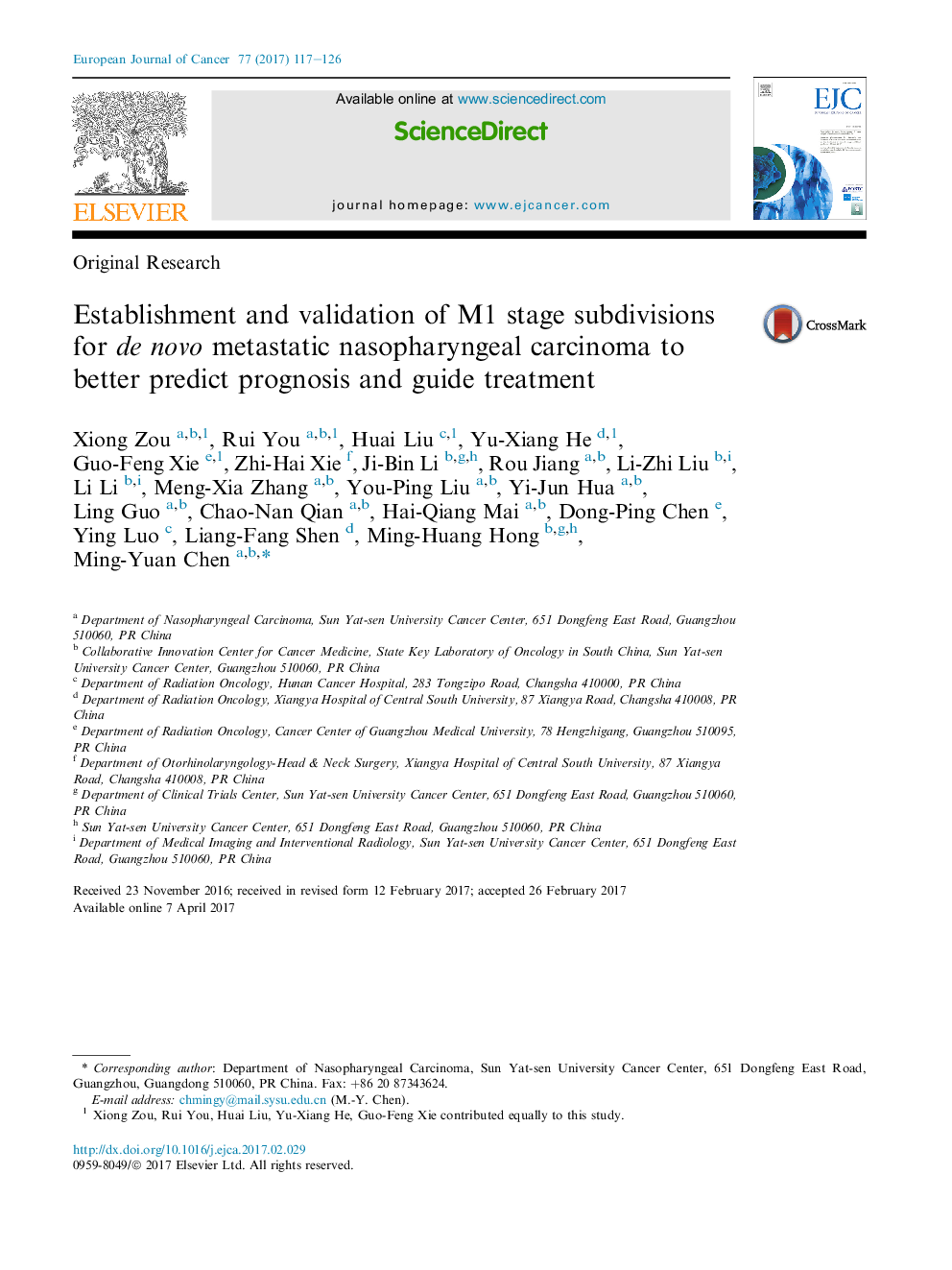| Article ID | Journal | Published Year | Pages | File Type |
|---|---|---|---|---|
| 5526620 | European Journal of Cancer | 2017 | 10 Pages |
â¢M1 stage could be subdivided into three categories (M1a, b, c).â¢The survival curves were distinctly separated among these three categories.â¢Loco-regional radiotherapy may benefit patients without liver involvement more (M1a, b).â¢The role of local treatment for metastases needs to be further examined.
BackgroundTo better manage patients with de novo metastatic NPC (mNPC) including easily identifying individuals' survival outcomes and accurately choosing the most suitable treatment.Materials and methodsThree independent cohorts of mNPC patients (a training set of n = 462, an internal prospective validation set of n = 272 and an external prospective validation set of n = 243) were studied. The radiological characteristics of distant metastases, including number of metastatic locations, number of metastatic lesions and size of metastatic lesions, were carefully defined based on imaging data. These three factors and other potential prognostic factors were comprehensively analysed and were further integrated into new subdivisions of stage M1 using a Cox proportional hazards model.ResultsWe successfully subdivided the M1 stage into three categories: M1a, oligo metastasis without liver involvement; M1b, multiple metastases without liver involvement; and M1c, liver involvement irrespective of metastatic lesions. The 3-year overall survival ranged from 54.5% to 72.8%, from 34.3% to 41.6% and from 22.6.0%-23.6% for M1a, M1b and M1c, respectively (P < 0.001). Systemic chemotherapy combined with radical loco-regional radiotherapy may benefit patients in M1a and M1b, not in M1c. Further aggressive treatment of metastatic lesions based on systemic chemotherapy and definitive loco-regional radiotherapy showed no survival benefit, even for patients in M1a (P > 0.05).ConclusionThe subdividing of M1 provided promising prognostic value and could aid clinicians in choosing the most suitable treatment for de novo mNPC patients.
